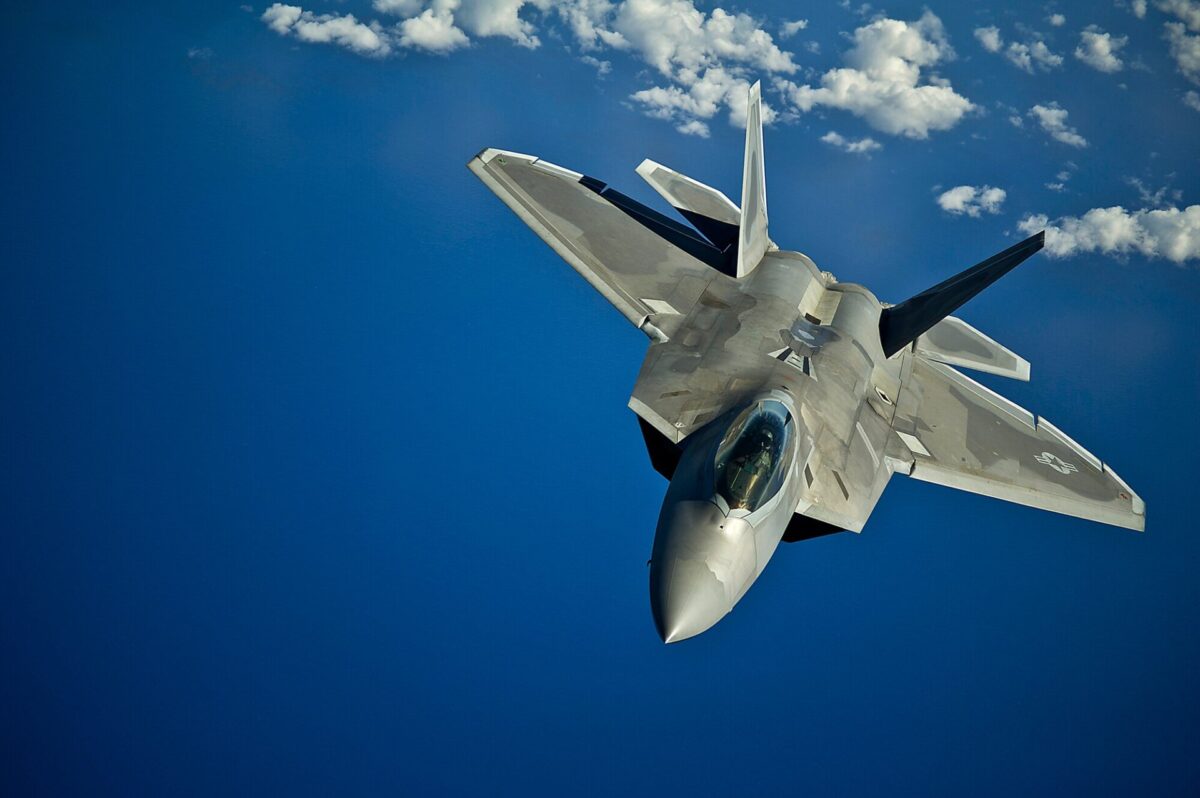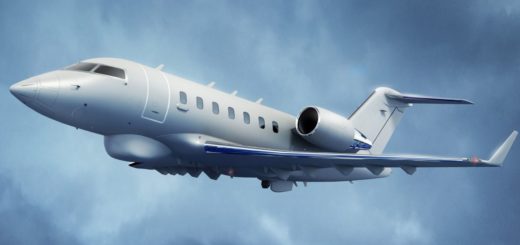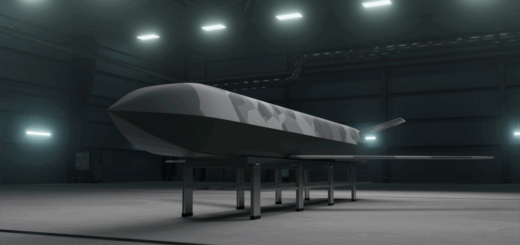The stealthiest fighter jets in the world in 2025

Two decades ago, stealth fighters were rare and experimental. Today, the advent of modern stealth fighters is reshaping air combat tactics, influencing operational strategies, and forcing a rewrite of military doctrines. Among the most advanced examples of this new generation are four of the stealthiest fighter jets that push the limits of radar detection, with some boasting radar cross-sections as small as a marble.
True stealth combines both passive and active measures. Passive stealth focuses on minimizing an aircraft’s natural signatures (radar, infrared, and, to some extent, visual) while active stealth involves electronic countermeasures designed to disrupt or deceive enemy sensors.
However, radar cross-section (RCS) remains a key metric for measuring an aircraft’s detectability, with smaller figures indicating a significantly lower chance of being tracked by enemy radar systems.
Focusing on RCS, let’s jump in and take a look at the stealthiest fighter jets on the planet.
The 4 stealthiest fighter jets in the world
AircraftEstimated RCS (m²)Everyday Object EquivalentF-22 Raptor~0.0001Small marbleF-35 Lightning II~0.0015–0.005Golf ball – dinner plateJ-20 Mighty Dragon~0.05BaseballSu-57 Felon~0.1–1Soccer ball – beach ballAnyone who knows their fighter jets will not be surprised that the F-22 Raptor is the stealthiest fighter jet… nothing can match it when it comes to stealth capabilities. Its per-unit cost of $143 million makes it the most expensive fighter jet in the world, although reports suggest it did cost double that ($300 million plus) to produce each aircraft.
USAFIt’s important to note that RCS values are estimated and can change depending on the situation. Things like radar frequency, aspect angle, and operational conditions can significantly affect a fighter jet’s ability to stay invisible. Advances in radar technology continue to challenge stealth designs, pushing manufacturers to develop ever-better technology.
Let’s take a closer look at how the world’s four stealthiest fighter jets manage to stay invisible.
Lockheed Martin F-22 Raptor
Estimated RCS: 0.0001 m2
USAFKey to the Lockheed Martin F-22 Raptor’s stealthiness is its planform alignment. Every edge of the aircraft, from its wings to its intakes, is meticulously aligned to reflect radar waves away, not back to the receiver. Instead of regular panel gaps, the F-22 uses jagged edges to scatter radar waves, and its trailing edges are angled to prevent reflection.
Complementing this innovative airframe design is a coating of radar-absorbing materials (RAM). Its surface is coated in iron ball paint that converts incoming radar waves into tiny amounts of heat, rather than reflecting it back.
Radar-absorbing composites protect the intakes and leading edges, and foam RAM shields the turbine blades from reflection. Although modern coatings are more durable than the early RAM used on aircraft like the B-2 and F-117 and are now capable of withstanding supersonic speeds and harsher weather conditions, they still require careful maintenance. Advances in RAM technology, particularly those incorporated later into the F-35 program, have continued to improve durability and simplify repair processes over time.
USAFThe F-22’s thrust vectoring nozzles not only give it insane agility; they also help protect against infrared detection. Whereas traditional nozzles focus hot gases into a tight jet, perfect for IR detection, the F-22 spreads the gases over a wider area, lowering the temperature and shortening the trail.
The F-22 is a masterpiece of air dominance, but its eye-watering price tag meant it was never built in large numbers. By 2011, the program was officially shut down, and the US shifted gears to back the more export-friendly F-35 Lightning II. Even so, with new challengers like China’s J-20 and Russia’s Su-57 entering the fray, upgrades are already being pursued.
RELATED
How was the F-22 Raptor overshadowed by the F-35 Lightning II?
Lockheed Martin F-35 Lightning II
Estimated RCS: 0.0015–0.005 m²
USAFWhile the Lockheed Martin F-35 Lightning II is less stealthy head-on than the F-22, its capabilities set it ahead of every other stealth jet by several orders of magnitude. Like the F-22, stealth begins with shape, and the F-35 is optimized to bounce radar waves anywhere except back.
Every edge of the aircraft is angled to deflect radar, while the fuselage has long, sharp chines that smooth the radar reflection. An internal weapons bay means there are no missiles or bombs hanging off the wings, and the gold tinted canopy is actually a thin layer of indium-tin-oxide that shields the cockpit from radar reflections.
USAFUnlike the F-22, which has RAM applied on top of the skin, the F-35 incorporates RAM into the composite skin of the aircraft itself, enhancing durability. Clever nozzle shaping and mixing with ambient air reduces the temperature of the exhaust plume, and some of the engine heat is bled off into the wings to spread it out and prevent IR detection.
With an estimated lifetime budget of $1.5 trillion, the F-35 is the most expensive fighter jet ever built. Nevertheless, its exceptional capabilities mean it’s a popular choice for air forces the world over, and with more than 1,150 aircraft delivered, it’s one of the most widely used fighter jets today.
Chengdu J-20 Mighty Dragon
Estimated RCS: 0.05 m2
N509FZ / Wikimedia
The Chengdu J-20 Mighty Dragon has a larger radar signature than the two previous jets, but is still much more difficult to detect than legacy fighters like the F-15 or Su-27. Its stealth is at its best head-on, with side and rear aspects more easily detectable.
Like the F-22 and F-35, the J-20 uses planform alignment to disrupt radar waves, while the sharp, chined nose helps deflect radar energy. Like the F-35, it uses diverterless supersonic intakes that shield the engine face, and its weapons bay is internal.
The Achilles heel of the J-20 is its infrared heat signature. Early models used the Russian AL-31F engines with big, round exhaust nozzles, creating a beacon for IR detection. The upgraded WS-10C engine, featuring sawtooth exhausts, improves on this, and a next-generation WS-15 engine intends to bring even better IR signature management.
Alert5 / Wikimedia
The J-20 uses RAM coatings across its surface, and while the details are not publicly available, they’re likely to involve a combination of composites and advanced materials.
At close range, the F-22 out-stealths the J-20, but that’s not the full story. The J-20 is a long-range hunter, with a huge range and large internal fuel stores. It’s designed to break into enemy airspace and push back US and allied airpower over the Pacific.
China is working hard to close the gap on engine stealth and IR signature management to make this a dangerously capable aircraft.
Sukhoi Su-57 Felon
Estimated RCS: 0.1 – 1 m2
Anna Zvereva / FlickrRussia’s flagship stealth fighter, the Sukhoi Su-57, approaches stealth a little differently from the American and Chinese designs. From the front end, it’s pretty stealthy, similar to a soccer ball in radar signature, but its side and rear are much more visible compared to other stealth fighters.
The Su-57 employs the same sort of planform shaping as others we’ve discussed, as well as internal weapons bays and canted tail surfaces to reduce reflection as much as possible. However, the jet is let down in some areas, with large, widely spaced engines that are exposed to radar signal, and a less seamless, somewhat rougher surface than the F-22 and F-35.
Russia has been testing modified, flattened engine nozzles, similar to the F-22’s thrust-vectoring design, which could improve rear-aspect stealth. While these flatter nozzles would likely enhance low observability, they may come at the cost of reduced thrust efficiency compared to the Su-57’s current round-axisymmetric exhausts.
Anna Zvereva / FlickrWhile the US philosophy is to hide first and fight later, the Su-57 is all about being just stealthy enough to get in for that first long-range missile exchange. When that’s the R-37M air-to-air missile, nicknamed the AWACS killer, that could be from over 200 miles away.
Beyond that, it relies on brutal agility, delivered by 3D thrust vectoring, massive control surfaces, and high-functioning radar and sniper-like missiles.
While the F-22 sneaks in and has a brutal knife fight, the Su-57 throws grenades and hides. It is hard to track, deadly even at range and can fly for hours. Its multiple radar systems give it a 360-degree sensor sphere; it has been deliberately equipped to make it dangerous to stealth aircraft, and could be the best hunter in the business.
RELATED
Russia announces first export contract for Su-57 fifth-generation fighter jet
Will these always be the stealthiest fighter jets?
The short answer is no. Multiple countries are working on new stealth fighters and are at various stages of development.
South Korea’s 4.5-generation fighter, the KF-21 Boramae, has been designed with stealth features, but lacks the internal weapons bay so crucial to full stealth capability. A proposed KF-21EX would have more advanced stealth, but with the KF-21 program still in development and under financial pressure, that’s likely a long way off.
Pepsi2024 / WikimediaAs prototypes evolve into new projects, other 5th-generation stealth fighters could come out of China or Japan. But the real upgrade will come when the 6th-generation fighter jets begin to arrive, under initiatives such as NGAD and GCAP. These next-gen aircraft will combine stealth with drone teaming, AI, and more advanced electronic warfare capabilities.
The table below summarizes the in-development or rumored stealth fighter projects.
CountryAircraftStatusStealth LevelSouth KoreaKF-21 BoramaePrototypeModerate (planned higher)RussiaSu-75 CheckmateIn developmentHigh (expected)ChinaFC-31 / J-35In developmentHigh (expected)USAF-47 (NGAD)In developmentExtreme (planned)UK, Japan, ItalyTempest (GCAP)In developmentExtreme (planned)France, Germany, SpainNGF (FCAS)In developmentExtreme (planned)As well as the projects we know about, there has also been some saber-rattling in Russia about a proposed MiG-41. A 6th-generation stealth interceptor, very little concrete evidence of development has emerged. Similarly, Iran’s ‘Qaher-313’ purports stealth capabilities, but is nothing more than a paper airplane for now.The post The stealthiest fighter jets in the world in 2025 appeared first on AeroTime.
Two decades ago, stealth fighters were rare and experimental. Today, the advent of modern stealth fighters is reshaping…
The post The stealthiest fighter jets in the world in 2025 appeared first on AeroTime.








